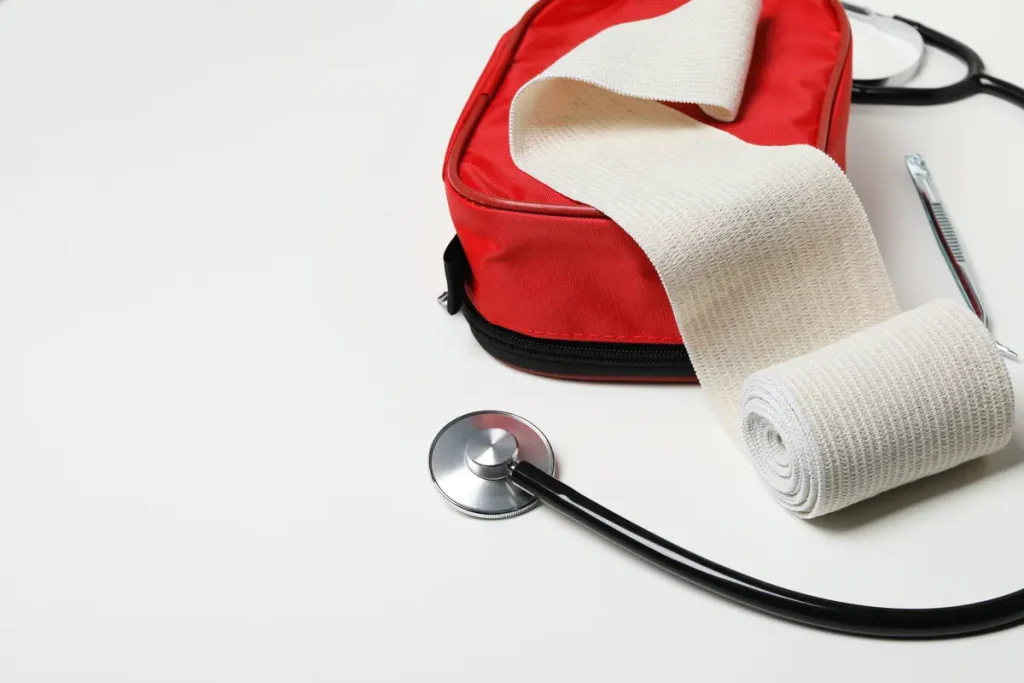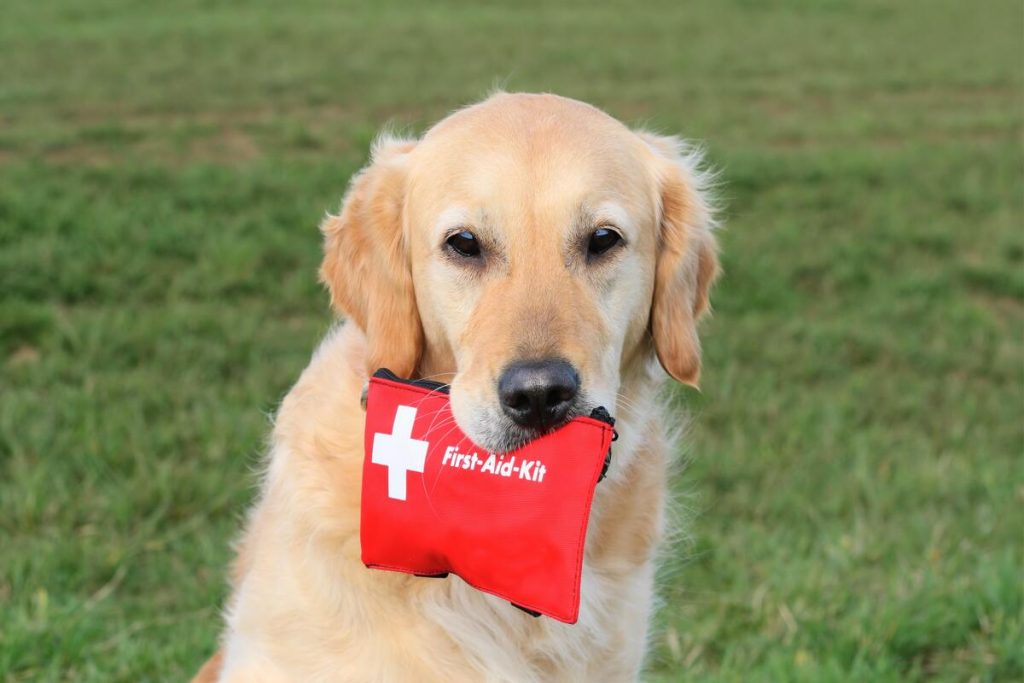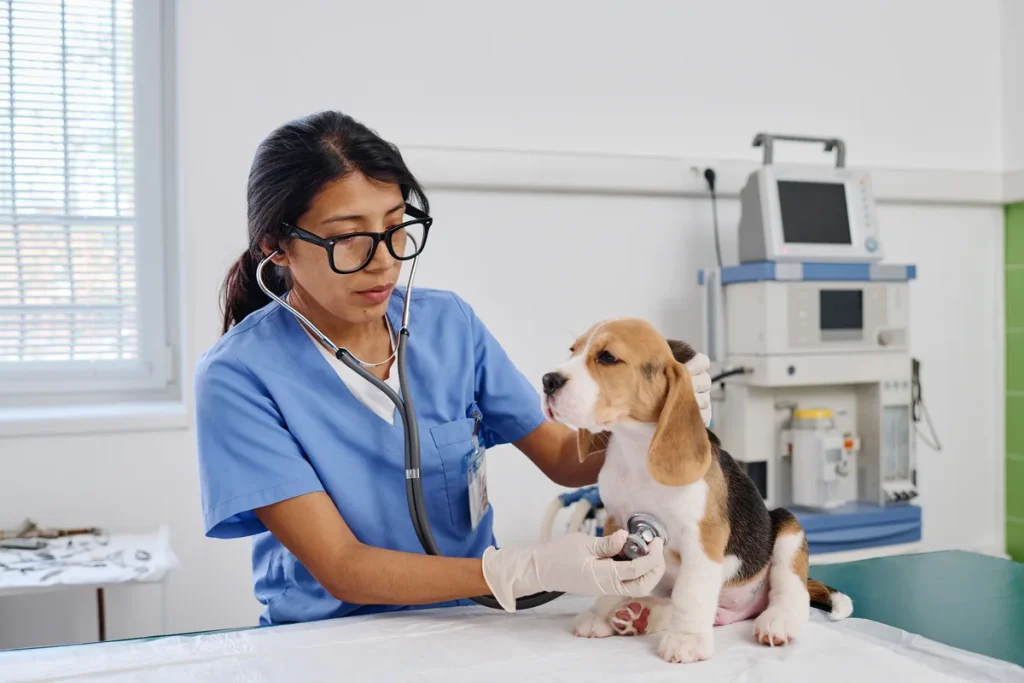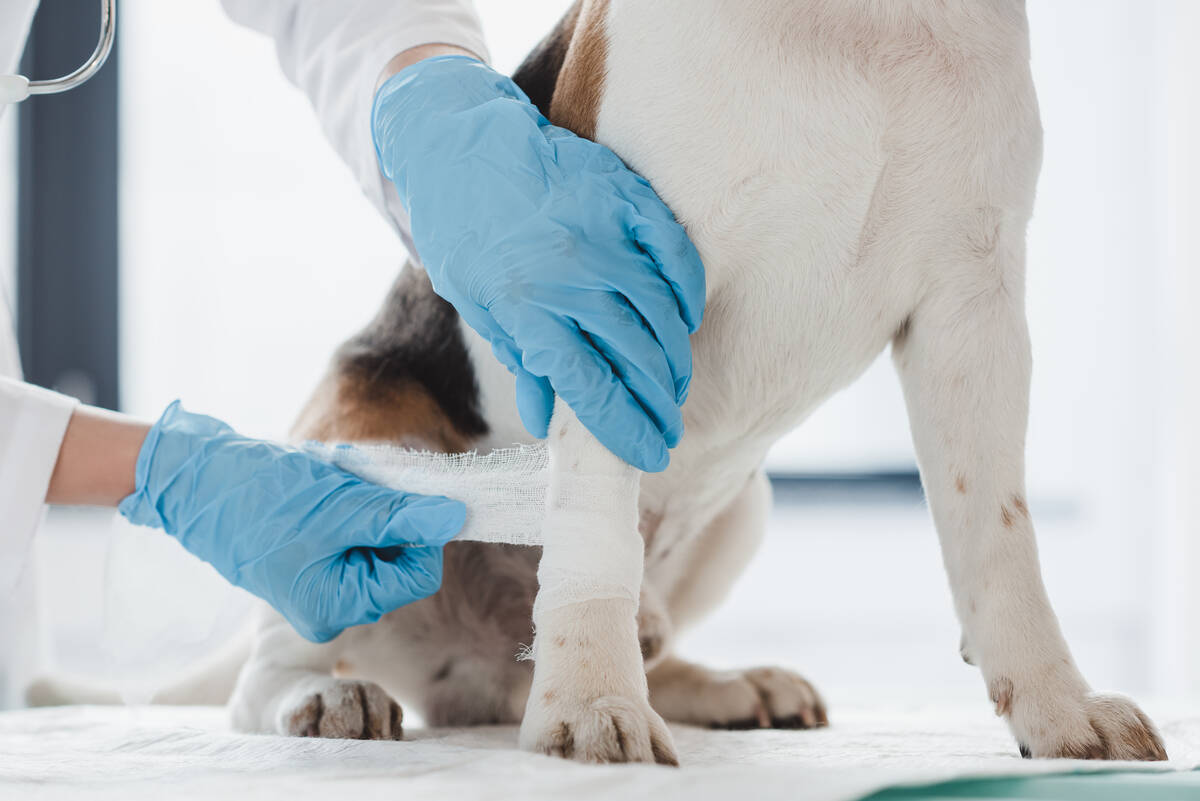Welcoming a furry friend into your life is one of the most heartwarming experiences. Our dogs quickly become family, offering unconditional love, loyalty, and a constant source of joy. As responsible pet parents, it’s our duty to ensure their well-being and safety, and one crucial aspect of that is being prepared for medical emergencies.
This guide will walk you through essential dog first aid tips, equipping you with the knowledge and tools to handle unexpected situations and potentially save your beloved companion’s life.
Keep reading to learn everything you need to know about dog first aid – from bandages to breathing techniques.
The Lifesaving Importance of Dog First Aid: What You Need to Know
Before we dive into the nitty-gritty of dog first aid, let’s underscore the significance of being prepared for the unexpected. Just as you’d keep a first aid kit for your human family members, your furry friends deserve no less.
Here’s why dog first aid is a vital skill for every pet parent:
Accidents Happen
Dogs (and most other animals) are naturally adventurous creatures, and their boundless curiosity and bursts of energy can sometimes get them into trouble and, unfortunately, lead to accidents. From stumbling over unseen obstacles to getting a little too excited and injuring themselves during play, mishaps can happen at any moment.
Medical Emergencies
Whether it’s a sudden illness or a more severe condition, dogs can experience medical emergencies just like humans. Knowing how to respond in these situations can make all the difference in getting them the help they need in a timely manner, and it starts with being informed about dog first aid.
Quick Action Can Save Lives
In emergencies, every second counts. Having the knowledge and tools to provide immediate care can be a lifesaver for your furry family member. Your dog’s life may depend on your ability to act swiftly and effectively.
How to Equip Your DIY Dog First Aid Kit: Must-Have Items

Now that you understand the importance of dog first aid let’s get down to the practical details. You can’t predict when an emergency will happen, but you can be prepared by assembling a well-stocked first aid kit.
Here are the essential items to include in your dog’s first aid kit to be prepared for different types of injuries and health emergencies:
1. Bandages and Dressings
- Sterile gauze pads or gauze roll
- Adhesive bandages
- Vet wrap (a self-adherent bandage that won’t stick to fur)
- Elastic bandage for wrapping sprains
- Medical tape
2. Antiseptic Wipes and Solution
- Antiseptic wipes or solution to clean wounds (Alcohol stings, so avoid it if possible)
- Hydrogen peroxide (for inducing vomiting, but only under veterinary advice)
3. Scissors and Tweezers
- Blunt-edged scissors for cutting bandages and tape
- Tweezers for removing splinters or foreign objects from your dog’s skin
4. Thermometer
- A digital rectal thermometer (normal dog temperature is around 100-102.5°F or 37.8-39.2°C)
5. Sterile Saline Solution
- To flush out wounds or irritants from your dog’s eyes in case of eye injury
6. Syringe or Eye Dropper
- For administering medications or fluids (under veterinary guidance)
7. Gloves
- Disposable gloves to protect yourself when giving first aid
8. Muzzle
- A basket muzzle or a makeshift soft muzzle (a piece of cloth or bandage) to prevent your dog from biting when in pain or distress
9. Digital or Penlight
- For checking your dog’s pupils, which can help assess their neurological status
10. Contact Information
- A list of emergency contacts, including your veterinarian, an emergency vet clinic, and the animal poison control center
11. Blanket or Towel
- To keep your dog warm and comfortable during emergencies.
Preparing for the Unexpected to Keep Your Dog Safe

Now that you have your DIY dog first aid kit ready, let’s explore some essential dog first aid tips and techniques to ensure you can confidently handle emergencies when they arise.
1. Sprains and Broken Bones
If you suspect your dog has broken a bone or sprained a joint, do your best to keep them still and minimize movement. Use a splint, if available, and wrap it gently to secure the affected area. Seek immediate veterinary treatment.
2. First Aid for Burns
For heat burns, cool the area with cold water (not ice packs) and cover it with a damp towel. For chemical burns, rinse the affected area with cold water for at least 20 minutes before seeking additional treatment.
3. Providing CPR
CPR can be a lifesaver if your dog’s heart stops beating or they stop breathing or have breathing difficulties. Follow these steps to help restore cardiac function:
- Check for breathing and a pulse. If absent, begin CPR.
- For rescue breathing, close your dog’s mouth and give them two breaths, ensuring their chest rises.
- For chest compressions, press down gently on your dog’s chest wall (rib cage) at a rate of 100-120 times per minute.
4. Heat Stroke
Heat stroke can be life-threatening for dogs. Signs of heightened body heat include excessive panting, drooling, vomiting, and, of course, if your pet collapses. If you suspect heat stroke, cool your dog with wet towels (not ice, because you don’t want the temperature to drop too fast) and seek immediate veterinary care.
5. Handling Wounds
Dogs can get injured easily, so knowing how to handle their wounds is important. For minor cuts and scrapes, apply gentle pressure with a clean cloth until the bleeding stops. Then, rinse the wound with warm water and apply an antibiotic ointment.
For deeper or more serious wounds, such as bite wounds, apply quick pressure with a clean cloth, clean the wound with antiseptic, and seek immediate veterinary attention. The vet may need to perform wound cleaning, stitching, or bandage wounds to prevent infection and promote healing.
6. Poisoning
If you believe your dog has ingested something toxic, contact the ASPCA animal poison control center and follow their guidance. Do not attempt to induce vomiting without veterinary advice, as some substances can cause more harm if brought back up.
7. Foreign Body Ingestion
If you suspect your dog has swallowed a foreign object, contact your vet for advice. Do not try to retrieve it yourself, as this can cause further harm.
8. Allergic reactions
Bee stings, insect stings, or other allergens can cause allergic reactions in dogs. Some dogs may develop anaphylactic shock, which is a life-threatening condition that requires immediate veterinary attention.
To provide aid for shock, keep the dog warm and calm, and elevate the hind legs. To provide aid for stings, remove the stinger if possible and apply a cold compress to the affected area. You can also give your dog antihistamines or steroids as your vet prescribes.
Recognizing Canine Distress Signals: How to Tell When Your Dog Needs Immediate Attention

We often wish our dogs could talk to us, but they have their unique way of communicating, even when something is wrong. In their world, non-verbal cues speak volumes, and they rely on us to be their advocates. From subtle changes in their daily routines to shifts in their demeanor and appetite, there are less obvious signs that your furry friend might be unwell.
Recognizing when our furry companions need medical care or even emergency care can be a matter of life and death. So, let’s delve into the subtle cues that our dogs use to communicate their discomfort, allowing us to provide them with the timely help they may desperately need.
As Orhan Pamuk wisely said, dogs do speak, but only to those who know how to listen. It’s our duty to listen when words fail, and in this section, we’ll equip you with the skills to do just that.
When the Eyes Speak
Your dog’s eyes are more than just windows to their soul; they are also windows to their well-being. Changes in the clarity of their gaze can indicate discomfort or pain. If your dog’s eyes appear cloudy or dull, it might indicate underlying eye issues. Excessive blinking or squinting can signal discomfort, possibly due to a foreign object in the eye, an infection, or a corneal injury.
Additionally, if you notice redness, excessive tearing, or discharge, these could be signs of conjunctivitis or other eye infections. Unusual eye-related behaviors can also be telling. If your dog is rubbing their eyes against objects or pawing at their face, it’s a sign of irritation. Sometimes, a sudden sensitivity to light (photophobia) may indicate an eye problem, such as uveitis.
In all these cases, quick action and medical care are crucial. Understanding how to interpret these ocular cues can make a significant difference in promptly addressing your dog’s health condition.
Barking for Help: Vocal Clues
Dogs express themselves through various vocal cues, which can reveal a lot about their well-being. So, paying attention to any changes in their vocal patterns is vital. For instance, if your normally quiet dog suddenly starts barking excessively, it could indicate pain or anxiety. High-pitched yelps or screams are often clear signs of distress or acute pain and should prompt immediate attention.
Whining, particularly when persistent, can also be a call for help. If your dog is howling excessively, especially if they’re not prone to doing so, it might signify discomfort or anxiety. These vocal clues should never be ignored, as they could be the first signs of a medical emergency.
Body Language
Your dog’s body language is a rich source of information regarding their health and well-being. Knowing how to interpret your dog’s posture and movements can help you spot signs of discomfort or pain.
When a dog tucks their tail between their legs, it’s often a sign of fear, anxiety, or discomfort. On the other hand, arching their back and avoiding certain movements may indicate musculoskeletal issues or pain in their back or abdomen.
A stiff and arched back, along with raised fur along the spine, can signal aggression or a strong reaction to a perceived threat. In contrast, a dog that becomes suddenly lethargic, with a drooping tail and lack of interest in play or walks, might feel unwell or in pain. Lameness or limping can suggest a musculoskeletal injury or discomfort in one of the legs.
Knowing When to Seek Professional Help

While these dog first aid tips are valuable, it’s crucial to understand their limitations. They can help stabilize your dog and provide initial treatment, but professional veterinary care is often necessary for severe injuries or ongoing health issues.
Always consult your vet or an emergency veterinary hospital when in doubt.
Key signs that your dog needs professional help include:
- Severe injuries, deep wounds, or broken bones
- Inability to breathe or extreme difficulty breathing
- Prolonged vomiting or diarrhea
- Loss of consciousness
- Sudden collapse or inability to stand
- Ingestion of a toxic product or poisonous substances
- Signs of internal bleeding in dogs such as…
Remember that your dog’s vital signs, such as heart rate, breathing rate, and body temperature, can provide valuable information when assessing their condition. Monitor these closely and seek professional care if they deviate significantly from normal.
Be Prepared for Any Situation: Master Dog First Aid
Our dogs are more than just pets – they are our unwavering companions through thick and thin. Being prepared to provide dog first aid is not just an option; it’s a responsibility we owe to these four-legged family members.
In the journey of pet parenthood, there will be unexpected bumps along the way. By equipping yourself with the knowledge and tools to handle medical emergencies, you can ensure that your furry friend receives the best care possible when they need it most.
So, gather your supplies and study up on these essential dog first aid techniques. Caring for our beloved dogs is one of the greatest expressions of love we can offer. That’s where Little Chef comes in! Our 100% natural dog treats, vegan and free from additives, make your furry friend wag their tail with joy.
Our delicious superfood-rich biscuits are packed with all the nutrients they need for a happy, healthy, and fulfilling life.

